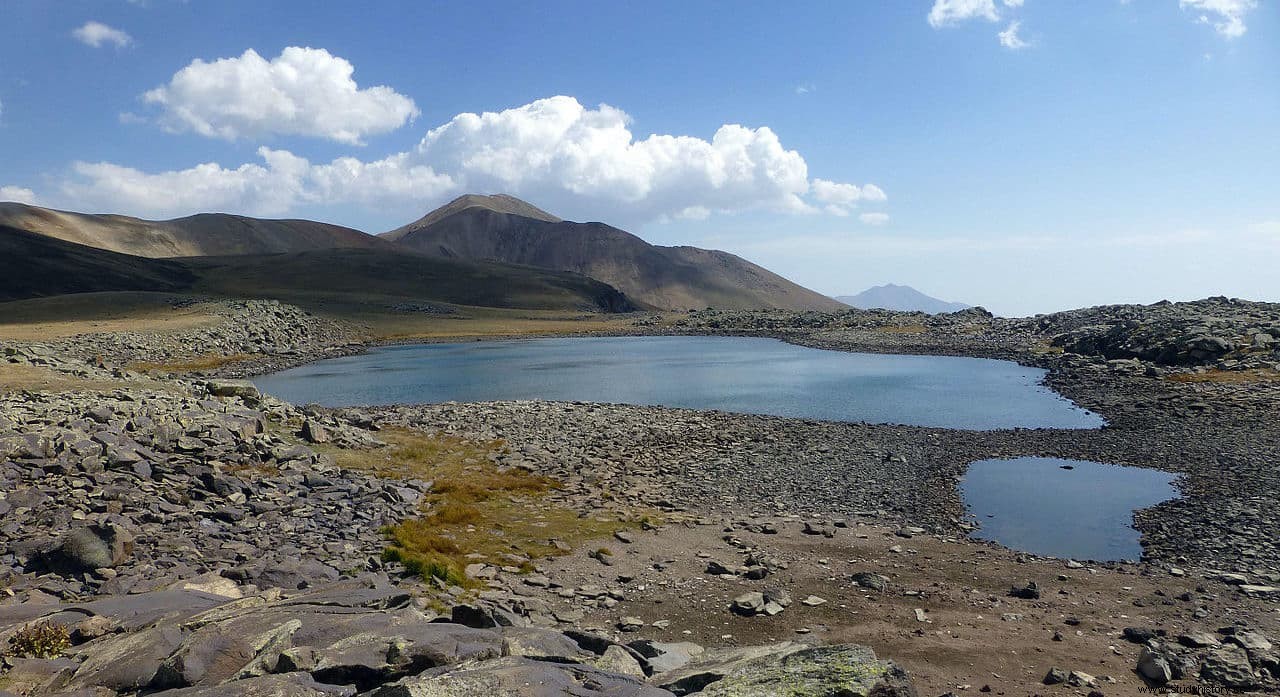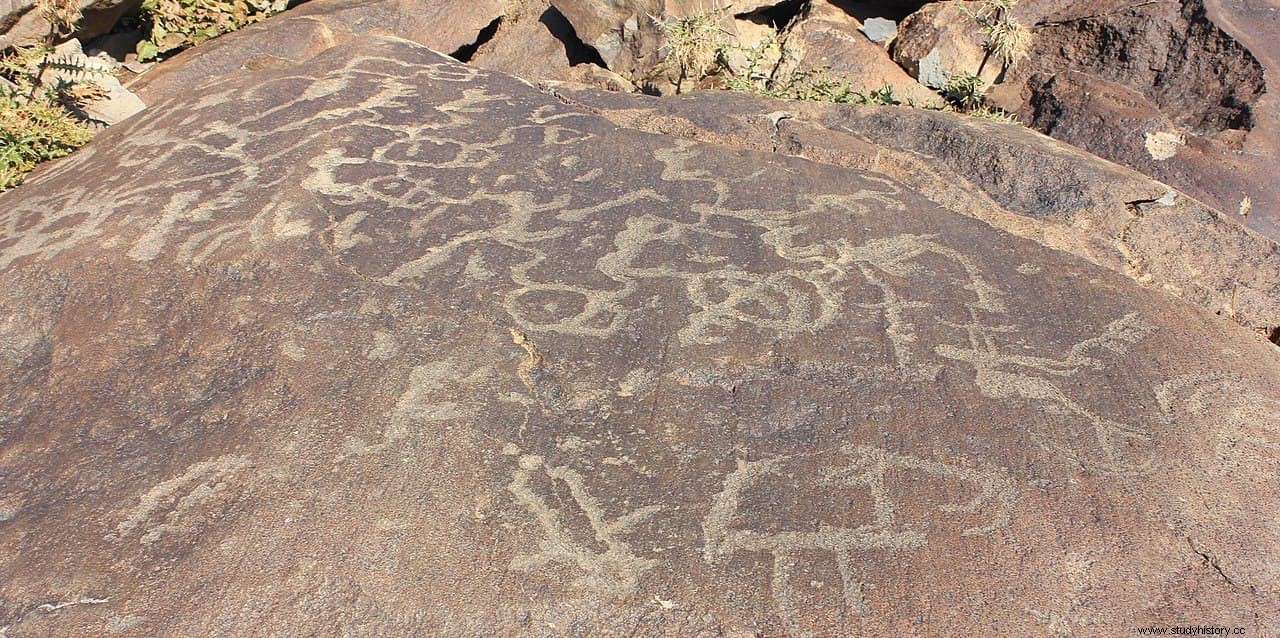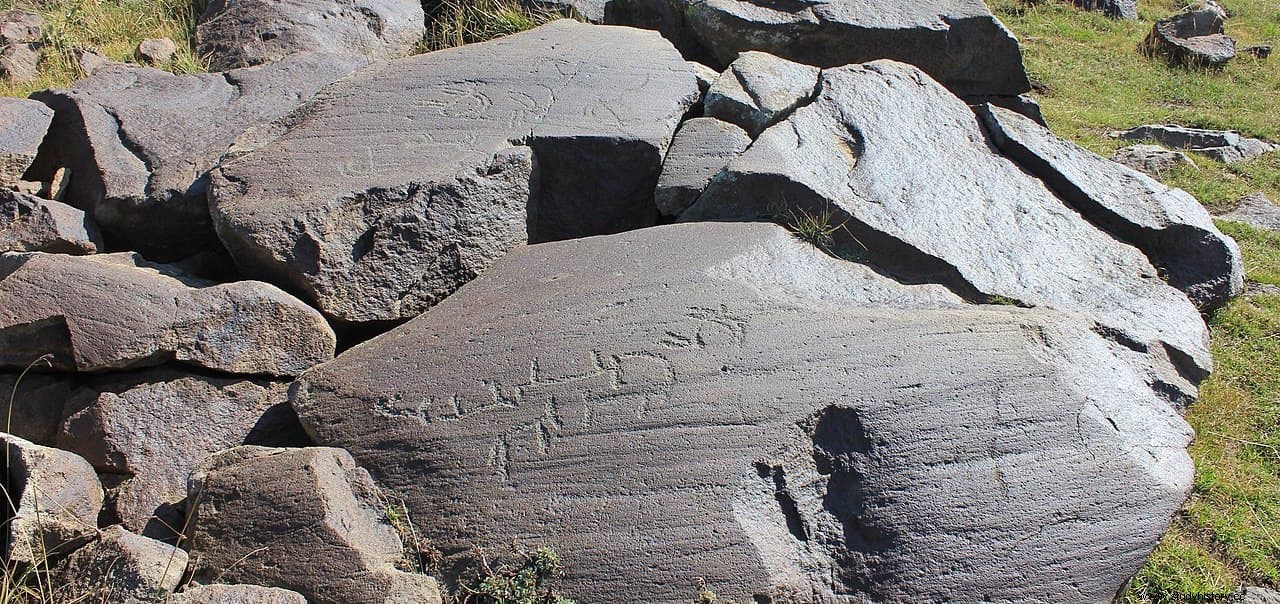In a previous article we talked about the talking stones of Carahunge, some 7,500-year-old megaliths that have strange perforations made at different angles through which the wind produces sounds.
They are located in the Armenian province of Syunik, in the southwest of the country and in the middle of a mountainous plateau at an altitude of 1,770 meters near the city of Sisian.
Perhaps not by chance, just 15 kilometers from the 223 stones, there is another much older site. These are thousands of rocks distributed throughout the Syunik mountain range, which have different carved motifs, and which are known by the general name of Petroglyphs of Ughtasar, after the name of the mountain and the lake around which they are found.

The rocks are black and of volcanic origin, coming from an ancient volcano now extinct, on which it is believed that hunting scenes, animals such as aurochs, mouflons, gazelles, deer, horses, bears were recorded from the Paleolithic, about 12,000 years ago. , wolves, jackals, leopards, bears, and tigers.
Next to them, geometric shapes such as spirals, circles and wheels in what appear to be some kind of calendars, with crosses to divide time and circles for the seasons. Also what resembles the zodiacal sign of Ares and which can be representations of goats, geographical elements such as rivers, lakes and springs, the sun, the moon, stars, constellations, comets and even lightning.

Researchers believe that the shepherd tribes that inhabited the area were making the engravings over hundreds or thousands of years. In fact, in some places human figures appear cultivating the land together with others hunting or what may be a dance.
In the latter case, it would be one of the first performances of ceremonial dance, if not the oldest.
Most of the petroglyphs are from the Bronze Age and the first years of the Iron Age, after which only a few are recorded, carved by shepherds who spent the summers alone with their cattle in the top of the mountain.

The site was discovered at the beginning of the 20th century and was studied in the 1920s and again in the 1960s by an archaeological expedition of the Armenian Academy of Sciences. Access to the site is complicated and the petroglyphs can only be seen during the summer, since the rest of the year the rocks are usually covered with snow.
The researcher Hamlet Martirosyan related the abundant representations of goats in these petroglyphs with a writing system called itsagir . According to Martirosyan, in the Armenian language the words goat and writing they are homonyms.

By combining abstract signs with images of animals and people in horizontal or vertical rows, prehistoric engravers would have been able to convey messages.
Martirosyan relates this type of writing to Egyptian hieroglyphs, for which he finds up to 30 percent coincidence between pictographic and hieroglyphic signs. The conclusion of it is that both have the same origin:

Similar petroglyphs, although to a lesser extent, have been found in many other places in Armenia:in the mountains near Tsghuk, in the Vardenis range, and at the sources of the Yeghegis, Arpa, and Vorotan rivers, among others. All of them have in common their altitude (more than 3,000 meters), and their location near glacial lakes. According to some researchers, they represent tribal myths and traditions, as well as stories from ancestors.
